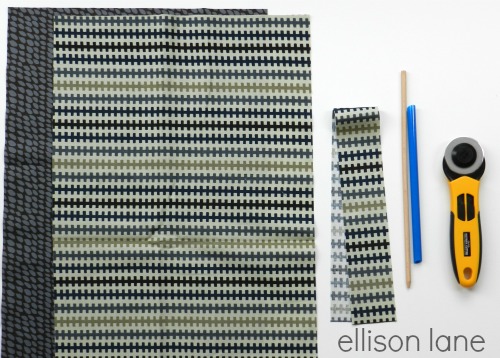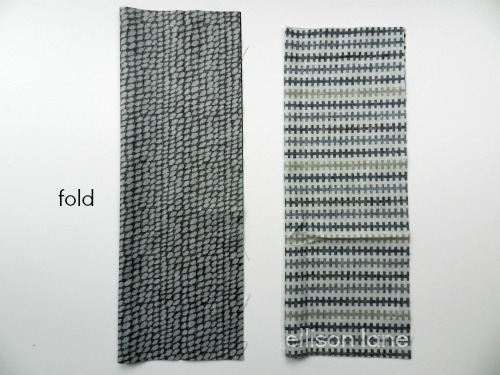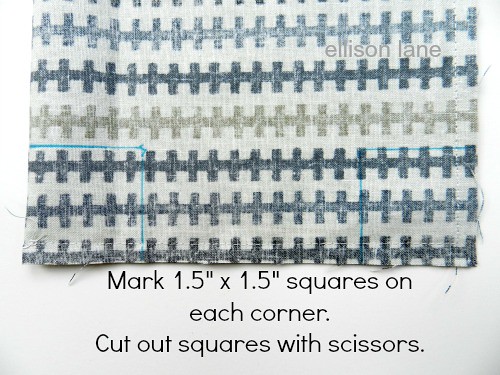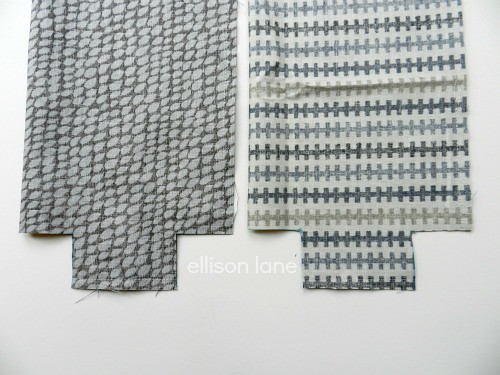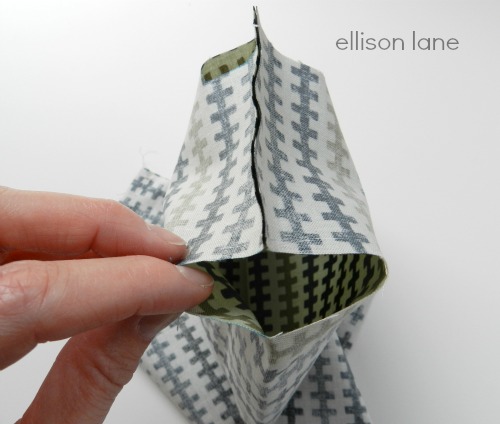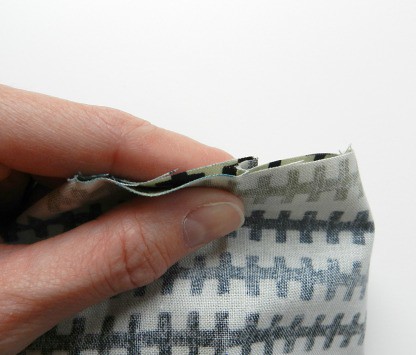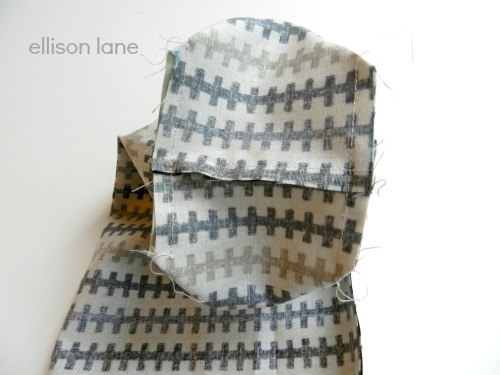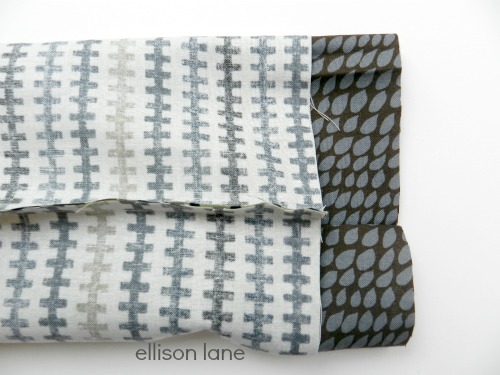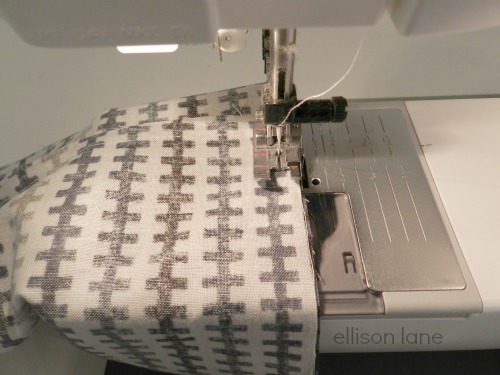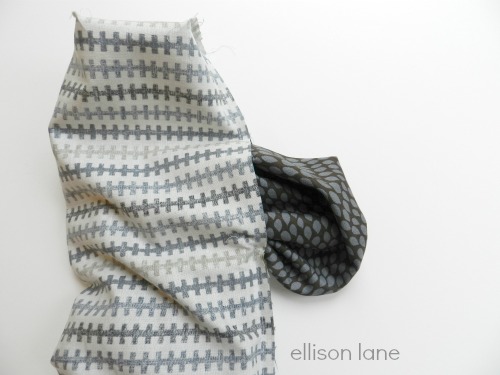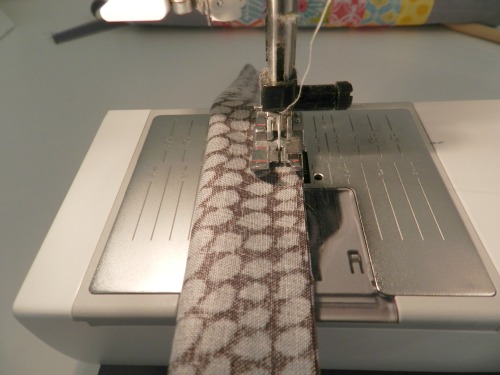Hi All! I'm Amy from
Stitchery Dickory Dock, where I blog all about my quirky quilting additions, and my adventures in modern motherhood and homemaking, among other things. Would love to make your acquaintance so do pop over and say hello!
I'm so excited to be today's stop on the 12 Weeks of Christmas series! I'm going to share with you my tutorial on these darling ruffled mini wallets. These make fabulous little gift card holders, that double as business or credit card holders as well. Great stocking stuffers and gifts for teachers, co-workers, and even kids.
Step 1: Cut your pieces, following the guide below. Also, do note that you may use any medium-heavy weight double-sided fusible interfacing. I like the Pellon Peltex Heavy Duty for this project because it makes for a thicker, more substantial wallet. Also, you'll see in this pic that I'm only 5 prints- I chose the same print for my pockets and for my strap- but you may of course choose to utilize different prints for these.
Step 2: Adhere the wrong side of one of your exterior pieces to your interfacing piece by following the pressing instructions on the interfacing. NOTE: Since this is double-sided fusible interfacing, you'll need to put a piece of parchment paper or a no-melt craft surface under your piece while pressing, to avoid adhering it to your ironing board!
Step 3: Press your 2 pocket pieces in half with the fold along the 4" side, then top stitch 1/4" from the fold on both pieces. In this same step, you'll also attach your velcro or snap pieces. Position them 1/2" from the raw edge, centered.
Step 4: Next, press your 3 ruffle strips in half lengthwise.
Step 5: To gather your ruffles, simply set your machine to it's highest upper tension, and largest stitch length. These stitches will gather the fabric as you stitch, but will be loose enough to allow you to adjust and position the ruffle as needed.
Step 6: Now let's attach the ruffles. First find the center point of your interfaced exterior piece by folding it in half along the 4" length, and then mark it at each side with a pin. Now pin your first ruffle to the piece, leaving 1/4" from the bottom edge for seam allowance. Be sure the folded (finished) edge of your ruffle is pointing toward the outside, or "bottom" of the piece.
Stitch the ruffle to your piece by sewing over the gathering stitches (don't forget to reset your tension and stitch length to their normal settings).
Add the remaining 2 ruffles in the same fashion, positioning them so that the fold of each ruffle barely covers the stitching of the previous ruffle. This spacing should leave you about 1/2" left between the raw edge of the top ruffle, and the center point marking (this is where your strap piece will go).
Step 7: This is my favorite way to make straps! Take your strap piece and press the edges to the center, along the length of the strip.
Then press in half, hiding the raw edges inside.
Step 8: To attach the strap, first align and pin the strap above your top ruffle covering the raw edge (but at or below the center point of your exterior piece)- this is the spot where your wallet will fold in half, so you want the strap just below the fold, not on it.
Now, cut the strap excess at the edge of the piece, and set the excess aside- we'll add it back on in just a couple of minutes.
Stitch the strap piece down using an 1/8" seam allowance on both edges.
Now pull out your remaining strap piece and top stitch it using a 1/8" seam allowance on both sides.
Step 9: Now take your remaining exterior piece (the one without the interfacing), and pin the pocket pieces to the right side of it, aligning the folded edges toward the center, and the velcro (or snap) pieces facing up and to the outsides.
Step 10: Here's where the remainder of the strap comes back in. Fold it in half and align the raw edges directly on top of the right side of the strap that you stitched to your ruffled piece. Pin it snuggly.
Here's what your two pieces should look like at this point.
Place these two pieces right sides together, and pin all the way around, making note to leave a 3.5" opening at one of the ends.
*There are two things to take note of as you prepare to stitch around this piece using a 1/4" seam: 1) Make sure the fold of your strap is tucked toward the center of the piece, so you don't accidentally stitch over it, and 2), Smoosh your bottom ruffle away from your seam allowance so you don't sew over it...BUT, be sure the raw edges on each side of all 3 of your ruffles are flat and not crumpled, so they lay nice and flat when you turn your piece.
Be sure you back tack your stitches at the beginning and end of your seam.
Step 10: Clip your corners.
Step 11: Now to turn the piece. A forewarning: this is without a doubt the most "hairy" step of this project, but I promise, you can do it! If you're using the heavy duty Pellon interfacing like I did, it's going to feel, at first, like you can't possibly turn this thing! The key is not being afraid to crunch up the interfacing...put some muscle into it! Don't worry, the wrinkles will press right out, so crunch away! I found that rolling it a bit helped too (you can see what I mean in this photo).
Step 12: Almost done! Now give your whole piece a nice hot steamy press, including tucking those raw edges in at the opening. Since we're using double-sided fusible interfacing, this step is really going to help strengthen your wallet, as the two pieces will now be not only stitched together, but also bonded together.
Step 13: To finish up, whip stitch the hole closed, and fold the piece in half (press the fold if you like).
There you go! A cute little wallet, sure to be a favorite in your handmade holiday gift arsenal. Hope you enjoyed this tutorial, and would love to see it if you do make one! Pop over at say hi on
my blog.






